No one wants to be in an emergency, but it is always good to know what to do just in case we find ourselves in the middle of one. If you get stuck in an elevator, see the related page here.
If you find yourself in a subway station and the lights go out, you’ll need a new source of light. Stations are equipped with flashlights to be used in these kind of circumstances. These are located behind a sheet of plastic which can either be smashed like a pane of glass (as shown below, the word 파손 (破損, pason) indicates smashing) or they might slide open. There is a piece of plastic in the storage unit extending into each flashlight. Once you remove a flashlight, the gap is closed and the light turns on automatically. Sometimes there is a siren that sounds as well so first responders can more quickly find survivors.
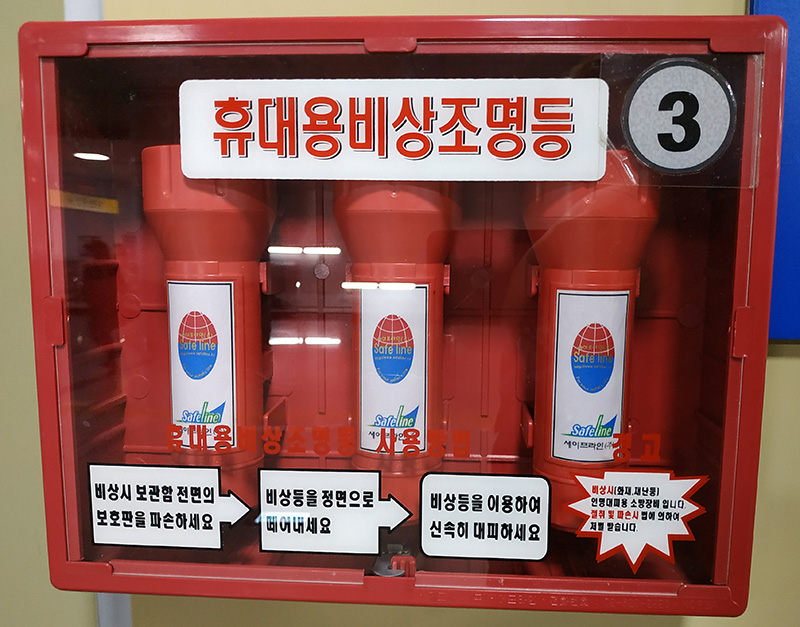
Here is a similar style found in a resturuant.

If there is a small fire, you might try to battle it with a fire extinguisher. The Korean term for this is 소화기 (消火器, sohwagi). These metal storage containers are not locked, and an extinguisher and/or a fire hose will be available. These are also located near some elevators in apartment buildings.

Ceilings of subway stations have glass or plastic transparent panels which help to slow smoke from infiltrating areas. This gives people more time before oxygen is replaced by smoke. Subway stations tend to have multiple sets of these on each floor.
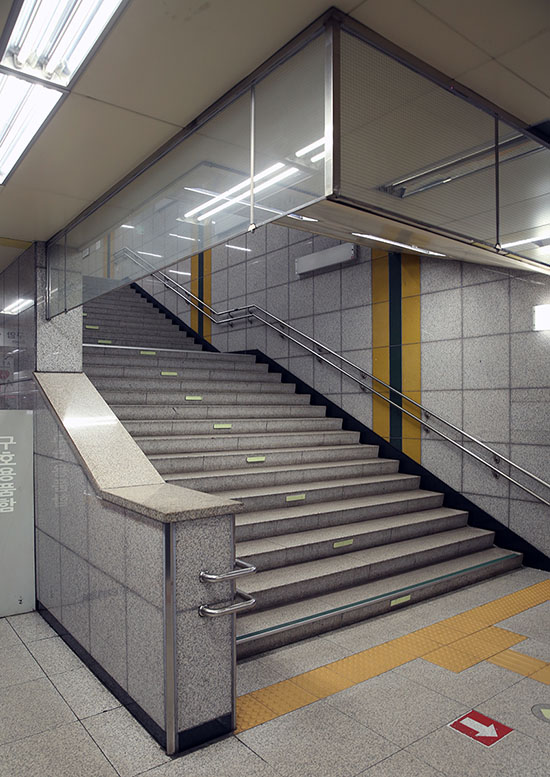
If the smoke is bad, get close to the ground as the air will be less smoky, and try to locate a sign telling which direction is the exit. These signs are built into the floor and are flush so people will not trip.
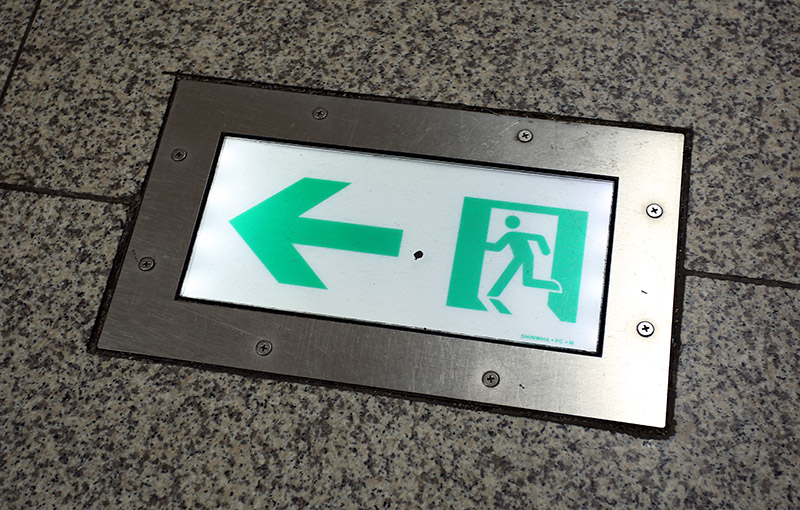
If you need emergency supplies in order to escape, try and find emergency supply cabinet. These may differ in what supplies they have, but they seem to have all have heavy duty masks to breathe despite smoke. The example here also has bottled water and some have flashlights. If you want a closer look, click the image to see a larger size.
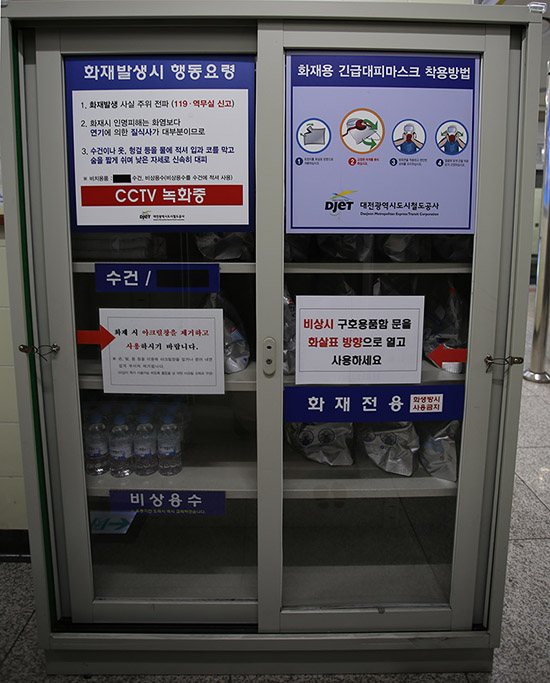
This is what they look like when viewed from the side. The words are 구호용품함 (救護庸品함, guho yongpum ham) which roughly translates into relief supply cabinet.
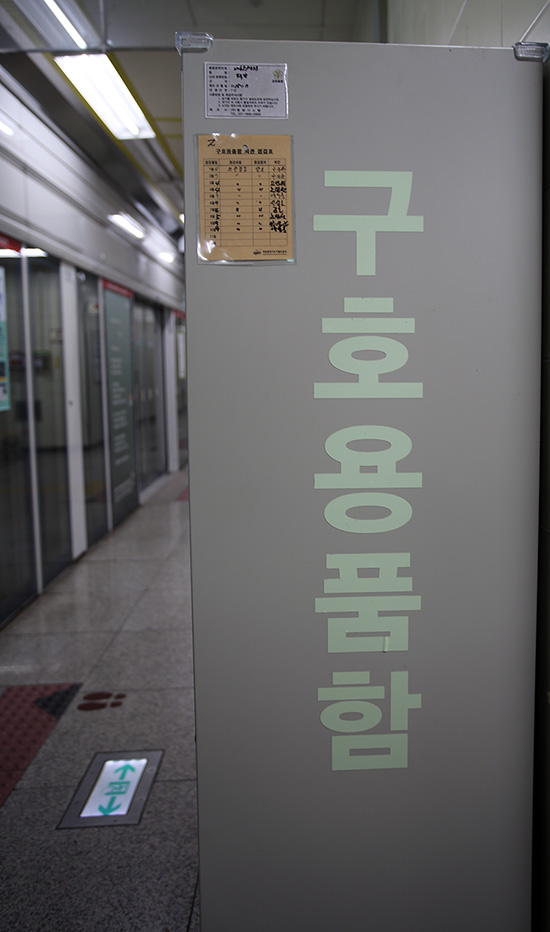
Here is another cabinet found in the same subway system but with radically different supplies. If you want a closer look, click the image to see a larger size.
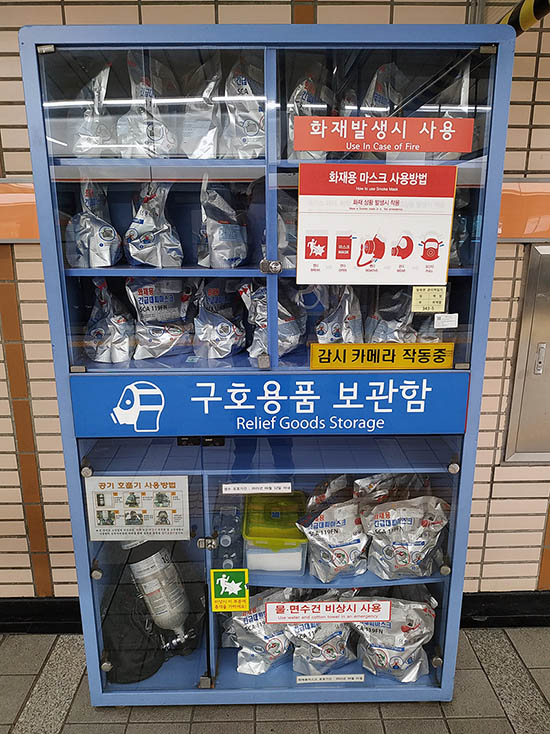
One of the stickers mentions that this emergency supply cabinet is being recorded on CCTV as means of warning people from stealing emergency supplies.

This one is specially designed to be broken in order to be opened. Don’t expect to open the cabinet without using force. If you want a closer look, click the image to see a larger size.
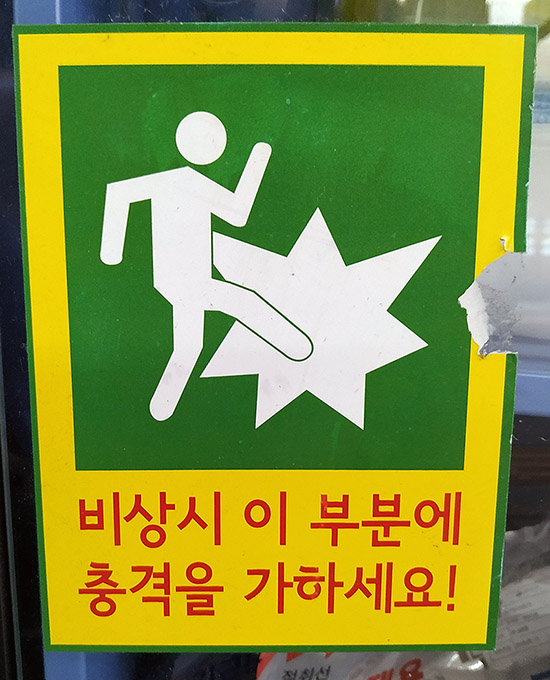
There is a stack of masks to help filter the smoke out of the air. Here are directions for how to use them. If you want a closer look, click the image to see a larger size.
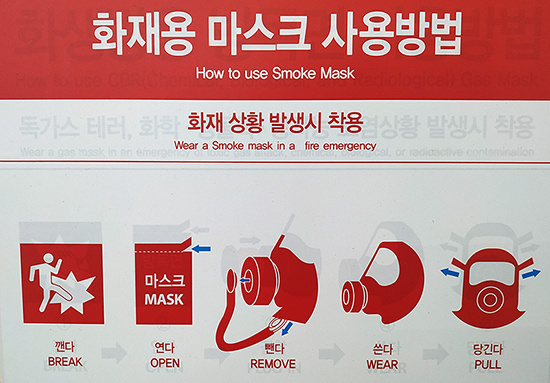
If there are not enough masks, they suggest using a wet cloth to act as a filter.

The most rare item is the largest and is a full oxygen tank with full face mask. If the user is unfamiliar with how to use one of these, the visual directions might be enough to properly use it even without being able to read the Korean. If you want a closer look, click the image to see a larger size.
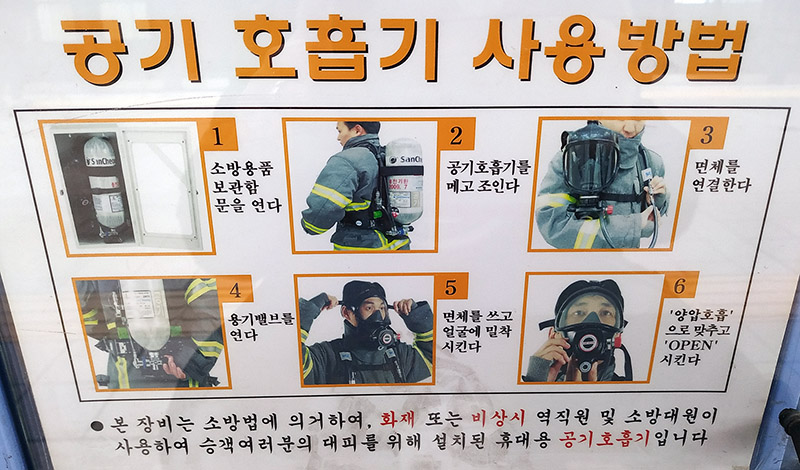
Due to stations having emergency supplies, and stations being located underground, subway stations can also be used as emergency shelters from issues outside.